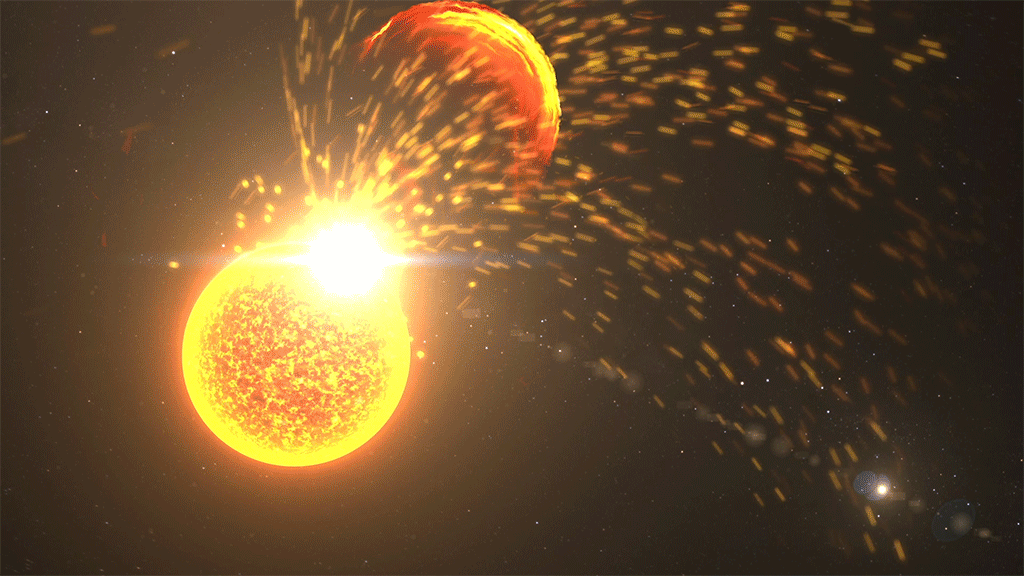Solar 'superflares' millions of times stronger than anything today may have sparked life on Earth
By Ben Turner published about 23 hours ago
Intense solar storms may have delivered Earth its earliest building blocks of life, new research suggests.

A simulation of an enormous solar flare and coronal mass ejection (CME) blasting out of the sun. Such a storm may have contributed to the rise of life on Earth, new research suggests. (Image credit: NASA's Goddard Space Flight Center)
Life on Earth could have been sparked by enormous superflares from a hyperactive young sun, a new study suggests.
By firing charged particles found in the solar wind at a concoction of gases present in Earth's early atmosphere, scientists found that the combined ingredients form significant quantities of amino acids and carboxylic acids — the building blocks for proteins and all organic life.
Scientists have been puzzling over the conditions that sparked life on Earth since the 1800s, when it was speculated that life may have begun in a primordial chemical soup referred to as a "warm little pond." In the 1950s, experiments that exposed gas mixtures of methane, ammonia, water, and molecular hydrogen to artificial lightning showed that 20 different amino acids formed from the process.
In the years since, however, the picture has been complicated. Scientists found that Earth's early atmosphere was filled with less ammonia and methane than previously thought, and more carbon dioxide and molecular nitrogen — both of which are gases that take a lot more energy to break down than lightning alone could provide.
More:
https://www.livescience.com/space/the-sun/solar-superflares-millions-of-times-stronger-than-anything-today-may-have-sparked-life-on-earth
